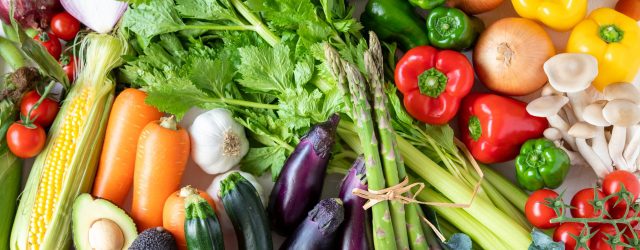
The Cabinet Office Ordinance to partially amend Food Labelling Standards (Japanese) was promulgated and came into effect on March 28, 2025.
N.b. No changes have been made to the proposed amendment or the transitional measures since the draft was released for public comment in January.
We have mentioned it previously on LinkedIn, but due to the importance and potential impact on products labeling in the next few years, please find the outline of the amendment as follows:
- Deletion of labelling exemption regulations for food additives for nutritional fortification purposes
(Amendments to: Article 3, Paragraph 1; Appended Table 4 and 24) - Amendment of the standard values for nutritional labelling
(Amendments to: Appended Tables 9, 10, and 12) - Review of labelling rules for individual food items
(Amendments to: Appended Tables 3, 4, 5, 19, 20, and 22) *The provisions concerning prepared frozen foods will take effect from April 1, 2026.
Meanwhile, the notification (the Regarding Food Labelling Standards and the Food Labelling Standards Q&A) and the Guidelines for setting food expiry date labelling (Japanese) (which has been reclassified as an appendix to the Food Labelling Standards Q&A) were also amended on the same day, whose main points are as below (from A to C).
A. From the 38th amendment of the Regarding Food Labelling Standards (Japanese)
When labelling based on the standard values for nutritional labelling after the amendment (April 1, 2025), it is desirable to indicate “栄養素等表示基準値(2025)” (En: the standard values for nutritional labelling (2025)) to show clearly that the values are based on the new reference values to distinguish them from the previous standards.
Other amendments have also been made to the measurement methods for dietary fiber and the vitamin B group.
B. From the 20th amendment of the Food Labelling Standards Q&A (Japanese)
(Process-75-2) Regarding the labelling of foods that use additives for nutritional fortification, it’s important not only to indicate the use of additives but also to display the amount of the relevant nutrient. Even if labelling the nutrient name is not required, it is recommended to include both the nutrient name and its amount, as this information helps consumers make informed and rational food choices. (omitted).
(Process-64)1 For spices and spice extracts, as per the provisions of the section on ingredient names in the table in Article 3, Paragraph 1 of the Food Labelling Standards, and excluding those already classified as Existing Additives (additives with a long history of consumption in Japan)(the 1996 Ministry of Health and Welfare Notification No. 120), a collective label such as “spices” or “mixed spices” is permissible only when their combined weight does not exceed 2%. of the total ingredient weight.
When the combined weight exceeds 2%, each spice must be listed by its common name in descending order of weight. Or, the most common names of the spices can be listed in parentheses after labelling as “香辛料(En: spices)”, Inside the parentheses, spices are listed by descending order of weight. However, within the parentheses spices with lower weight percentages can be combined, starting with the smallest, until their cumulative weight reaches 2% of the total ingredient weight. Once this 2% threshold is met, these combined spices can be grouped and listed as “その他の香辛料”(En: other spices) within the same parentheses. (omitted)
The Q&A regarding spices has been amended due to the need for operational changes following the review of the labelling rules for individual items.
C. Additionally, the following amendments have been made:
- “Non-caffeine” and “non-alcoholic” do not fall under the nutritional labelling specified in Article 3, Paragraph 3 of the Food Labelling Standards
- Regarding the labelling of ingredient names when using intermediate processed ingredients (pre-processed ingredients used to make final food products), the final product manufacturer is required to label the ingredients used with the most common names based on their own judgment.
In line with the amendment of the Guidelines for setting food expiration date labelling (such as setting safety factors based on food characteristics), the related Q&As have also been updated such as the one to help prevent the waste of edible food. As examples of labelling formats, “賞味期限 25-9(En: Best Before 25-9)” and “賞味期限 25 / 9(En: Best Before 25 / 9)” have also been added (note: a half-width space is required before and after the full-width “/”).
The above is not to be a comprehensive summary of the amendments content.
For an overview of each amendment and the transitional measures, please refer to the proposed amendment to the Food Labelling Standards in our past article Draft Amendments to the Food Labelling Standards and the Classification of Cashew Nuts and Pistachios as Allergens (Japan) (March 5, 2025).
Do notice that we have started to and will (in the future) reflect those amendments in all our labeling reviews and preparations from April 2025. If you have specific concerns or questions about potential impact on your products, feel free to reach out to us.
Share/Like/Follow:
Newsletter Signup
We issue monthly e-newsletters, which provide you with the latest updates on food labeling/regulations in Japan.
If you want to make sure to not miss any issue, please click below.
Related Service
Research Services on Ingredients & Food Labeling -For the Japanese Market-
We verify the conformity of ingredients and additives with the standards for use in Japan based on specifications such as formulation lists. We also verify the conformity of the proposed labeling of ingredient names, nutrients, etc. with the labeling standards based on specifications such as formulation lists.

Label bank Co., Ltd. CEO (Founder)
Born in Japan. Working on solving various issues related to food labeling operations. Also regularly gives lectures for various organizations in Japan.
Co-author of ‘Latest edition: Guide book Food Labeling Law and related business practical points – from scratch (Japanese version only)’ (DAI-ICHI HOKI CO., LTD/2019).






